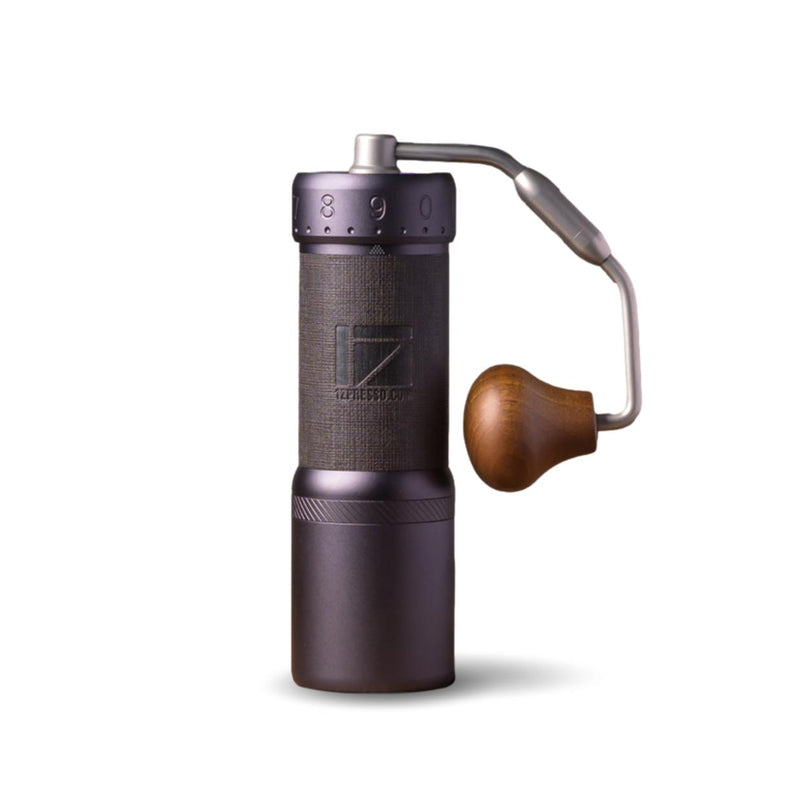Master the Art of Grinding: Unleash the Prospective of 1Zpresso J-Max
Master the Art of Grinding: Unleash the Prospective of 1Zpresso J-Max
Blog Article
Master the Art of Grinding Coffee Beans: An Overview to Coffee Grinders
For coffee lovers, the process of grinding coffee beans is even more than just a regular task; it is an art type that can considerably affect the flavor and quality of the final mixture. Coffee grinders play a critical role in this fragile process, yet understanding their use entails more than simply pushing a switch. Comprehending the subtleties of various grinder types, choosing the appropriate work dimension, and employing the right strategies are crucial steps towards accomplishing that best mug of coffee. Nevertheless, the journey towards coming to be a coffee grinding master doesn't finish there. As we check out the ins and outs of this craft, we will certainly reveal upkeep keys, troubleshooting pointers, and more, all aimed at elevating your coffee experience to new heights.
Kinds of Coffee Grinders
There are 3 main sorts of coffee mills frequently used by coffee fanatics: blade grinders, burr mills, and hands-on mills. Blade mills are one of the most basic type, using a basic blade to chop the coffee beans. While they are affordable and simple to utilize, they often lead to irregular coffee grounds because of inconsistent grinding. Burr mills, on the various other hand, use more precision by crushing the beans in between a relocating grinding wheel and a non-moving surface area. This leads to a consistent work dimension, which is vital for a regular coffee taste. Burr mills come in both level and cone-shaped forms, each offering a little various grinding attributes.
Hand-operated grinders, as the name recommends, need manual effort to grind the coffee beans. They are usually chosen by those who take pleasure in the procedure of hand developing coffee or for those who value portability. Manual grinders can differ in style, from easy portable models to a lot more detailed kitchen counter variations. While they might call for even more initiative, hands-on mills supply control over the grinding procedure, enabling individuals to change the work size to their choice. Each kind of coffee mill has its benefits and optimal usage situations, dealing with the diverse preferences of coffee enthusiasts.

Picking the Right Work Size
With an understanding of the various kinds of coffee mills, the following critical action in attaining the excellent cup of coffee is choosing the right work dimension. The grind size plays a considerable role in establishing the flavor profile of your coffee (1Zpresso J-Ultra). Different brewing methods call for specific work sizes to enhance the removal of flavors from the coffee premises
For a coarse work, perfect for French press and cold brew techniques, the coffee beans must resemble breadcrumbs, supplying a robust and vibrant flavor. Medium-coarse grinds, appropriate for Chemex or Clever Dripper, have an appearance similar to coarse sand, supplying a balanced preference.
Tool grinds, frequently made use of in drip coffee machine, have an uniformity resembling normal sand, resulting in a well-shaped flavor. Fine grinds, finest for coffee equipments, are akin to salt, yielding an abundant and extreme taste. Extra-fine grinds, used in Turkish coffee, are as fine as powdered sugar and produce a solid and potent brew.
Grinding Methods for Ideal Taste
To remove the max capacity of flavor from your coffee beans, grasping proper grinding methods is necessary. Consistency is key when it concerns grinding coffee beans for ideal taste. Making sure that the coffee beans are ground evenly is critical to accomplish a balanced extraction throughout the developing process. Among the basic strategies for improving flavor is to change the work size based upon the developing approach being utilized. A fine grind is perfect for espresso makers, while a coarse work is extra suitable for French press developing. Furthermore, Discover More the grinding time plays a substantial function in flavor extraction. Over-grinding can bring about a bitter preference, while under-grinding might result in a sour flavor. It is suggested to experiment with different grind sizes and brewing times to find the perfect balance that suits your taste preferences. By taking note of these grinding techniques, you can raise the flavor account of your coffee and enjoy an extra enjoyable cup every single time.
Upkeep and Cleansing Tips

In enhancement to routine cleansing, it is essential to evaluate your mill for any kind of indications of wear or damages. Check the blades, burrs, and other elements for any type of monotony or breakdowns. Change any type of worn-out parts immediately to maintain the top quality of your coffee work. Shop your mill in a dry and tidy atmosphere to stop any wetness or dirt from influencing its performance. By complying with these upkeep and cleaning pointers, you can guarantee that your coffee grinder remains to deliver delicious newly ground coffee for several years ahead.
Troubleshooting Common Mill Issues


Ensuring your coffee mill functions efficiently needs skilled troubleshooting of typical concerns that may occur throughout its use. One common problem with coffee grinders is irregular grind size. This blog issue can happen because of plain blades, improper calibration, or irregular coffee beans. To resolve this, ensure your grinder's blades are sharp and correctly straightened, calibrate the grinder according to the preferred work size, and shake the grinder carefully while being used to help accomplish an extra consistent grind.
This can occur when oils from the coffee beans develop up and obstruct the mill's chute. To fix this, take apart the grinder and clean all parts completely, paying special focus to the chute and burrs.
Last but not least, if your grinder is generating extreme noise throughout procedure, it might suggest a problem with the electric motor or interior elements. In such instances, it is suggested to get in touch with the supplier's directions for fixing steps or look for specialist support to diagnose and correct the concern immediately.
Verdict
To conclude, mastering the art of grinding coffee beans entails comprehending the various types of coffee mills, picking the best work size, using proper grinding techniques for optimum flavor, and keeping and cleaning up the mill on a regular basis. By following these guidelines and repairing common mill problems, coffee enthusiasts can elevate their coffee brewing experience and enjoy a delicious mug of coffee whenever.
Report this page